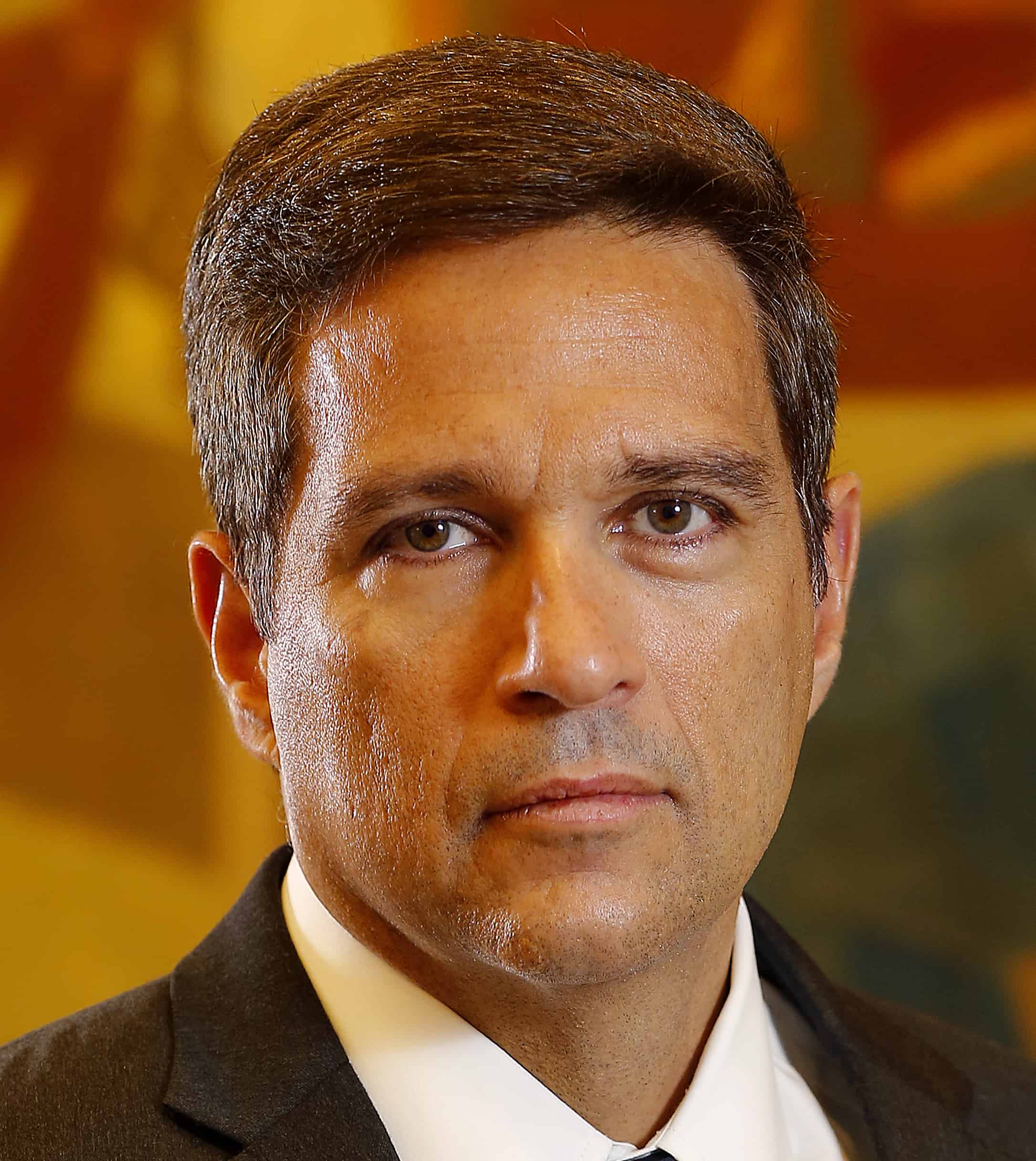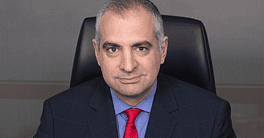Central Bank of Brazil Governor Roberto Campos Neto discusses the challenges and dilemmas facing central banks in emerging markets, and what to expect in the coming year.

Global Finance: What is the economic outlook for Brazil in the coming year?
Roberto Campos Neto: In Brazil, we have seen positive surprises to economic activity. At the beginning of the year, market analysts were forecasting very small growth in GDP in 2022, with the median forecasts standing around 0.3%. But Brazilian growth has been much higher than initially anticipated. After a positive quarter-over-quarter result of 1.1% in the first quarter, GDP grew 1.2% in the second quarter, driven mainly by household consumption and investment. On the supply side, although this growth is being led by the recovery in services, there is also a significant improvement in the industrial sector. With this result, GDP accumulated an increase of 2.6% in four quarters.
After these better-than-expected figures for GDP in the first and second quarters, market forecasts for this year have been revised up to a median of 2.1%. But GDP growth in 2022 should be higher than the current forecasts—for instance, the carryover for the year is now 2.6%.
In line with GDP growth, the labor market has presented positive developments. The unemployment rate has consistently decreased, falling from 14.9% in March 2021 to 9.1% in July 2022, standing now below the pre-pandemic level. The Brazilian labor market has had a good performance when compared to regional peer countries. For instance, while the unemployment rate in Brazil decreased 4.6 percentage points since July 2021, the average of main Latin American countries decreased 1.8 percentage points during the same period. In addition, growth in the employed population in Brazil has been widespread, and stronger in the formal sector, in recent months.
Regarding inflation, consumer prices remain high, with increases spread among several components, and continues to be more persistent than anticipated. Over the 12-month period ended in July, consumer inflation reached 10.1%. However, more recently, we have seen an incipient downward movement in inflation. The effects of the reduction of taxes on energy and fuel prices and the tighter monetary policy stance have played a role, and the inflation rate is decelerating. In July, the benchmark consumer price index [IPCA] recorded deflation of 0.68%, a result that was mainly due to the fall in energy and fuel prices.
Inflation should gradually decrease toward the targets. Market inflation expectations for 2022 and 2023 are around 6.7% and 5.3%, respectively, still above the target ranges. In their last meeting, in August, the Monetary Policy Committee decided to increase the policy rate by 0.5 percentage points, to 13.75%. The BCB [Banco Central do Brasil] has emphasized that future monetary policy steps aim to bring inflation to around the target in the relevant horizon, which includes 2023 and, to a lesser extent, 2024.
For the next year, we expect some deceleration in economic growth, as government support measures fade away and as the effects of the monetary policy tightening come with a lag. Market analysts now project growth of around 0.35% for 2023. We are more optimistic than market analysts and believe that forecasts will be updated upward as time passes, as was the case with 2022 GDP projections.
External conditions are among the main factors that may negatively affect economic activity. Nevertheless, due to the ongoing reorganization of international production chains and geopolitical developments, we also see opportunities for Brazil to increase its participation in global supply chains in the coming months and years. With its large natural resources, including renewables, the country has a great potential to increase its role as a provider of energy and food security, also in line with the green transition. With these business opportunities, Brazil received a significant amount of foreign direct investment recently, pointing to good prospects for capital inflows to the country in the future. However, there are also medium- and long-term challenges, such as low productivity, that may hinder growth. They should be primarily tackled with structural reforms and a sound macroeconomic framework that create a favorable environment for private companies to invest and innovate.
GF: What are the main risks?
Campos Neto: The global economy has been hit by a sequence of severe adverse shocks that have dramatically increased the uncertainty surrounding the economic outlook. Among these shocks, we can mention the new Covid-19 wave with Omicron and lockdowns in China, which are reinforcing bottlenecks in several sectors, and the conflict between Ukraine and Russia, with its sizable impact on commodity prices. These shocks have added upward pressures on inflation globally and reinforced its persistence. More recently, we have seen the tightening of monetary policies in most advanced economies [AEs], adding volatility to the markets, including in emerging market economies [EMEs].
In this scenario of increased uncertainty, risks for inflation and economic activity are linked and may reinforce each other. For instance, disruptions in supply chains generated by Covid-19, and in energy and food markets caused by the war in Ukraine, may lead to higher or more persistent inflation and more aggressive monetary policy tightening in major economies. In fact, inflation seems to be experiencing an important regime change, with a more structural and persistent nature reflected in an increase in the level of underlying inflation globally.
Furthermore, risks to the global economy go beyond the recent shocks. The most important are the following ones: supply chain bottlenecks, geopolitical events, changes in labor markets, high indebtedness levels and the combination of higher inflation and lower growth.
In terms of supply chain bottlenecks, many have argued that disruptions experienced during the pandemic were entirely due to supply problems. However, from a global standpoint, supply bottlenecks were not only a story of decreased supply, but supply struggling to keep up with an increased demand for goods due to a shift in consumption patterns toward more goods and stimulus measures provided by governments. Even though bottlenecks have eased in the recent period, these supply chain problems may still be a risk for inflation and growth going forward.
This risk is closely linked with another development, which is the growth in geopolitical tensions. This process may provoke a reorganization of geopolitical blocks, with implications for supply and trade chains. International trade flows may become more concentrated in the closer [nearshoring] or more trustworthy [friend-shoring] partners. In the medium- to long-term, globalization may lose impetus or turn to a deglobalization process. Countries may try to produce more domestically or trade with specific partners, relying less on international trade to make production more robust to external turmoil. Indeed, we have seen a reorganization of global supply chains, with more focus on resilience, redundancies and larger inventories. This may reduce efficiency in production, leading to higher prices and lower growth. It may also reduce technological innovation and diffusion, which were key factors in helping keep inflation low in past decades.
In terms of the changes in labor markets, it is likely that some transformations that occurred during the pandemic will remain, and others will take longer to revert. While some of them may bring efficiency gains, such as the increased share of remote workers, others may lead to higher wage pressures and inflation. Among them is the increase in a skills mismatch, with a shortfall of workers prepared for rapid economic digitization. Moreover, the drop in the worker participation rate in jurisdictions such as the US—by way of the Great Resignation—has the potential to negatively impact labor supply, eventually provoking labor shortages even if the economy decelerates.
In addition, countries face higher public and private indebtedness levels after the pandemic. These higher debt levels, in a context of lower growth and higher interest rates, will put pressure on public finances, inflation and the refinancing capacity of several companies in the years ahead. This is especially an issue for lower-income economies, which have less fiscal space and lower buffers for debt repayment.
Ultimately, the risk scenario is characterized by countries experiencing a stronger deceleration in economic activity, with inflation remaining at high levels for a more prolonged time. The combination of higher and more persistent inflation with lower growth and tighter global financial conditions, and the current diffusion of inflation across sectors, pose significant tradeoffs for central banks worldwide. Central banks may face a narrower path to navigate, with nonlinearities, where inflation components more linked to energy and commodities may change faster, but those from the core inflation and services sector may be stickier.
GF: How strong is the banking sector and how is lending available to businesses?
Campos Neto: The Brazilian banking system remained resilient and credit to business continues to grow. This has been possible because of the rationale of our reaction during the pandemic crisis. To face the effects of the Covid-19 crisis, the BCB acted in a coordinated manner with the Ministry of Economy to preserve the functioning of the banking credit channel to the real sector.
During the crisis, both institutions had well-defined roles—the BCB was in charge of monetary and macro financial measures, including liquidity and capital relief; the Ministry of Economy was responsible for direct transfers of resources, tax relief and tax deferrals—and the two institutions acted to provide credit lines to the economy.
The BCB acted proactively offering support to the banking sector, with measures equivalent to 17% of GDP in terms of liquidity and 20% of GDP in terms of capital. Credit lines were made available and, coupled with better conditions of financial institutions in terms of liquidity and capital availability, expanded the flows of resources to the economy. With those measures, credit continued to flow to households and businesses ranging from micro, SMEs and large companies. That had an important countercyclical role to cushion the real economy from the pandemic effects. At the same time, the system remained solid, well-capitalized and facing low levels of delinquency rates.
More recently, after the start of the monetary tightening cycle in March 2021, capitalization and liquidity of the Brazilian financial system were preserved above prudential requirement levels. The system has maintained levels of liquid assets sufficient to absorb potential losses, despite the reduction in the volume of available liquidity due to adaptation to current market conditions and competition for funding. Although the increase in the cost of funding has reduced credit margins, the level of profitability remains stable due to the increase in income from treasury assets. Stress-test results show that the system is resilient. Provisions remain adequate, above expected loss estimates.
In terms of lending for business, the growth of broad credit remains consistent with current economic fundamentals. In June, total credit operations outstanding to non-financial corporations grew 14.0% year-over-year. Credit to households maintained its growth rate of around 20% year-over-year. Credit to micro, small and midsize enterprises continues to grow above the pre-pandemic period, with the replacement of government programs by traditional bank credit. Larger companies, in turn, have mainly accessed the capital market, which remains liquid.
The BCB considers that asset prices and credit growth are not a concern in the medium term, although there are uncertainties to be monitored. The information available indicates that asset prices have behaved in line with economic fundamentals. In terms of credit growth, the increase in modalities of credit to households and micro firms with higher returns—and, consequently, with greater risks—indicates a tendency for an increase in delinquency, although within historical standards. Household indebtedness and debt service ratios have increased. Thus, substantial frustration in the performance of economic activity can result in an increase in credit risk. The BCB is attentive to the recent developments in the international scenario, and remains prepared to act by minimizing any exacerbated spillover on the prices of local assets.
Looking forward, the Brazilian financial system has great potential to evolve in line with the acceleration of technological changes and the transition to an integrated and tokenized financial world. The BCB will not impose obstacles to the innovation. Instead, it will work to provide adequate regulation and favorable infrastructure, e.g., the instant-payment system Pix, Open Finance and the Brazilian CBDC “Real Digital,” to allow innovations that promote more competition, efficiency, security and inclusiveness to the financial system.
GF: Do you think that emerging countries’ central banks have traded places with industrial countries’ central banks in showing a quicker and more effective response to inflationary pressures?
Campos Neto: Central bankers usually try to avoid committing two types of errors. First, doing too little, by being behind the curve, postponing monetary policy tightening and tolerating more inflation to avoid a slowdown in economic activity. Second, doing too much, by being ahead of the curve, tightening monetary policy more quickly and strongly to prevent higher inflation, and the unanchoring of inflation expectations at the expense of a sharper slowdown in economic activity.
Due to their different historical experiences, it could be expected that central banks in AEs and EMEs would have distinct reactions to the current inflationary episode. Central bankers in AEs, after several years fighting against low inflation, would be generally more tolerant with higher inflation, therefore more prone to commit the first type of error. Conversely, central bankers in EMEs, with their history of higher inflation, would be more reactive in monetary policy tightening, hence more prone to commit the second type of error.
In the economic literature, evidence suggests that acting quickly to mitigate an inflation overshoot is more conducive to a soft landing than a shallower, but more extended, tightening cycle. In other words, the cost to commit the second type of error (doing too much) is lower than the first type of error (doing too little), especially in the case of EMEs with a higher inflation history.
Moreover, there was a difference among central bankers in the understanding of the nature of the inflationary shock after Covid-19. While most central bankers in AEs viewed the inflationary episode in the beginning as a transitory event with supply origins, some central bankers in EMEs saw the inflationary process as a more persistent event, with an important demand component.
The BCB was in this second group, and therefore was one of the first central banks to start its tightening cycle, in March 2021. In order to promote a sound macroeconomic framework, the BCB plays its role by pursuing its mandate, in which price stability is the primary objective. Given its inflation projections and the risk of unanchoring long-term expectations, the institution currently considers it appropriate to continue advancing the process of monetary tightening significantly, into even more-restrictive territory. The BCB will persist in its strategy until the disinflation process consolidates and anchors expectations around its targets.
The BCB aims for its proactive strategy to yield positive results. Based on the advanced stage of the tightening cycle, Brazil is one of the few countries in which financial markets are pricing in interest rate cuts next year, rather than increases. The latest inflation readings show that inflation may have peaked in 2022, mostly due to government measures to reduce energy prices.
Nevertheless, the BCB acknowledges the nonlinearity of the inflation reduction process. Although inflation may come down faster from its peak due to the reduction in energy prices, it may take more time to come down toward the target, due to its diffusion across sectors and stickier components in the core, such as services. That is why the BCB will remain vigilant and why future policy steps could be adjusted to ensure the convergence of inflation toward the targets.
Ultimately, the BCB believes that the best contribution of monetary policy to sustainable economic growth, low unemployment and improvement in people’s living conditions is keeping inflation low, stable and predictable.



